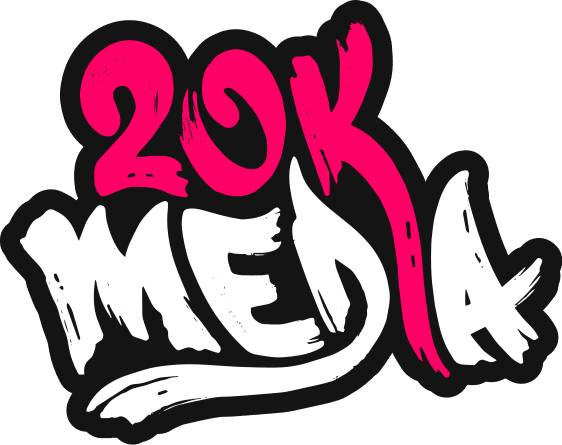In today’s digital age, traditional marketing strategies are no longer as effective as they used to be. The rise of the internet and social media has given birth to a new approach called inbound marketing. Inbound marketing is a marketing methodology that focuses on attracting customers by creating valuable content and experiences tailored to their needs and interests. Unlike outbound marketing, which interrupts the audience with unwanted messages, inbound marketing aims to attract prospects and convert them into customers through a variety of digital channels.
Attracting the Right Audience
One of the key aspects of inbound marketing is its ability to attract the right target audience. By using various techniques such as SEO (search engine optimization) and digital marketing, businesses can position themselves in front of potential customers who are actively searching for their product or service. By providing valuable and relevant content, businesses can grab the attention of their target audience and establish themselves as industry experts.
When creating valuable content, it’s important to understand the needs and pain points of the target audience. By addressing these concerns in blog posts, articles, or videos, businesses can showcase their expertise and provide solutions that resonate with potential customers. This not only helps in attracting the right audience but also establishes trust and credibility, making it more likely for prospects to convert into paying customers.
Using Content to Nurture Potential Customers
Inbound marketing goes beyond simply attracting customers. It also focuses on nurturing potential customers and guiding them through the buyer’s journey. By creating valuable content across different stages of the buyer’s journey, businesses can provide the information and resources needed to make informed purchase decisions.
For example, a potential customer in the awareness stage might be searching for general information about a specific problem they’re facing. By providing informative blog posts or videos that address their concerns, businesses can position themselves as helpful resources and build trust with the prospect. As the prospect moves into the consideration stage, businesses can provide more targeted content that showcases their product or service as the solution to the problem.
In addition to creating valuable content, businesses can also leverage marketing automation to nurture potential customers. By automating certain marketing tasks such as email marketing, businesses can stay top-of-mind and deliver the right content to the right person at the right time. This helps in building relationships with potential customers and increasing the chances of conversion.
Measuring the Success of Inbound Marketing
One of the great benefits of inbound marketing is its ability to measure and track the success of marketing efforts. Unlike traditional marketers methods, inbound marketing allows businesses to track various metrics and determine the return on investment (ROI) of their marketing campaigns.
Metrics such as website traffic, conversion rates, and lead generation can provide valuable insights into the effectiveness of inbound marketing strategies. By analyzing these metrics, businesses can identify areas for improvement and optimize their marketing tactics to achieve better results.
Tools like HubSpot are widely used in the inbound marketing industry to track and measure the success of inbound marketing campaigns. These tools provide a comprehensive view of the entire marketing funnel, allowing businesses to see how leads are generated, nurtured, and eventually converted into customers.
Important: Inbound Marketing vs Outbound Marketing
It’s important to understand the difference between inbound marketing and outbound marketing. While both aim to attract customers and promote products or services, they take different approaches.
Outbound marketing, also known as traditional marketing, relies on interruptive tactics such as television ads, cold calling, and direct mail to reach potential customers. These tactics are often seen as intrusive and can be easily ignored or blocked by the audience. In contrast, inbound marketing focuses on attracting customers through valuable content and experiences that they actively seek out.
Inbound marketing works by positioning the business as a helpful resource rather than an interruptive salesperson. By providing valuable content and addressing the needs of the target audience, businesses can build trust and credibility, making it more likely for prospects to engage and convert.
Gaining advantages from the practice of Inbound Marketing
Inbound marketing can help businesses of all sizes grow and thrive in today’s competitive market. By using inbound marketing strategies, businesses can attract the right target audience, nurture potential customers, and measure the success of their marketing efforts. In addition, inbound marketing helps businesses create a strong online presence and build long-term relationships with customers.
Successful inbound marketing requires a comprehensive understanding of the target audience, industry trends, and effective marketing techniques. Businesses can leverage social media marketing, search engine optimization, and content marketing to create a compelling inbound marketing campaign that resonates with potential customers.
As marketing trends continue to evolve, it’s important for businesses to adapt and embrace new strategies that align with consumer behavior. Inbound marketing provides a cost-effective and sustainable approach to reach and engage potential customers in a way that traditional marketing methods cannot achieve.
In conclusion, inbound marketing is a powerful marketing methodology that can help businesses attract, engage, and convert potential customers. By creating valuable content, nurturing leads, and measuring the success of marketing efforts, businesses can grow their business and achieve a higher ROI. In today’s digital age, implementing inbound marketing strategies is essential for any business looking to stay relevant and competitive.
Frequently Asked Questions
What does inbound marketing mean?
Inbound marketing is a marketing strategy that focuses on attracting customers by creating valuable content and experiences that are tailored to their interests and needs.
Does inbound marketing work?
Inbound marketing works by attracting visitors to your website through various channels such as content marketing, social media, and search engine optimization. Once visitors are on your website, you can engage with them, capture their information, and nurture them into becoming customers.
What are a few techniques for attracting customers using inbound marketing strategies?
Some inbound marketing strategies include content marketing, social media marketing, search engine optimization, email marketing, and influencer marketing.
How can inbound marketing boost my business?
Inbound marketing can boost your business by attracting qualified leads, increasing brand awareness, building trust and credibility, improving customer engagement, and driving revenue growth.
What tools can I use for inbound marketing?
There are several tools available for inbound marketing, such as HubSpot, Mailchimp, Hootsuite, Google Analytics, and SEMrush. These tools can help you with content creation, social media management, email marketing, analytics, and more.
What is the inbound marketing methodology?
The inbound marketing methodology is a four-step process that includes attracting visitors, converting them into leads, closing leads into customers, and delighting customers to turn them into promoters of your brand.
What advantages does inbound marketing offer?
Some benefits of inbound marketing include cost-effectiveness, targeted audience reach, improved lead quality, higher customer satisfaction, and long-term business growth.
What categories does inbound marketing fall under?
The types of inbound marketing include blogging, social media marketing, search engine optimization, email marketing, content marketing, influencer marketing, and video marketing.
How can I enhance my inbound marketing efforts?
You can enhance your inbound marketing efforts by creating high-quality content, optimizing your website for search engines, utilizing social media platforms, implementing marketing automation, and continuously analyzing and improving your strategies.
How can inbound marketing help in managing marketing and sales alignment?
Inbound marketing helps in managing marketing and sales alignment by focusing on creating content and experiences that educate and nurture leads, aligning marketing and sales goals, and using data and analytics to track and optimize the customer journey.






